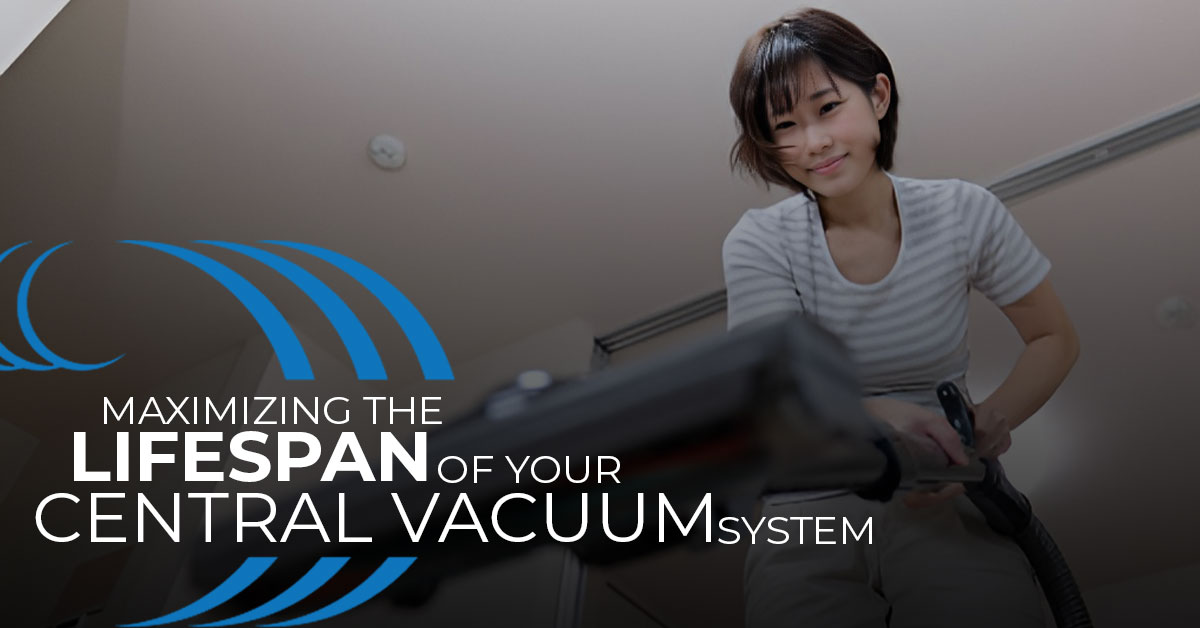
Boosting Productivity in Office Buildings with Central Vacuum
In today’s fast-paced work environment, maintaining a clean and organized office space is crucial for productivity. Office buildings often struggle with keeping their premises clean

A central vacuum system is a significant investment for any homeowner. It not only offers efficient cleaning but also enhances the air quality within your home. Therefore, it’s crucial to ensure proper central vacuum system maintenance to maximize its lifespan. This article will provide in-depth tips on how to do just that.
Before delving into maintenance tips, it’s important to understand what a central vacuum system is and how it works. Unlike traditional vacuums, a central vacuum system is built into your home with a main power unit typically located in a basement, garage, or utility room. From this unit, a network of tubing runs through the walls to inlet valves strategically placed throughout your home. When you’re ready to clean, you simply attach a hose to an inlet and start vacuuming. The dirt and debris are transported through the tubes and deposited into a canister in the main unit.
One of the major benefits of a central vacuum system is the efficiency of central vacuum systems. They’re more powerful than portable vacuums and can remove more dust, dirt, and allergens from your home, thus improving air quality with central vacuums.
The first step to maximizing the longevity of central vacuum units is proper installation. While it’s possible to install a central vacuum system yourself, consider hiring a professional to ensure it’s done correctly. An incorrect installation can lead to several problems down the line and reduce the system’s efficiency and lifespan.
The dirt canister of your central vacuum system should be emptied regularly. Depending on how frequently you use your system, the dust pouches or bags in the machines should ideally be emptied out thoroughly once every 3 to 4 months. This simple step can significantly enhance the longevity of central vacuum units and contributes to the overall central vacuum cleaning and servicing routine.
If your central vacuum system uses filters, remember to clean or replace them two to four times a year. If your filters are reusable, clean them with a solution of liquid soap and water, rinse thoroughly, and allow to dry before reinserting them. Regular filter maintenance is a key aspect of central vacuum system maintenance.
Routine maintenance for typical residential usage should include checking the motor brushes approximately every five years. Brushes that are worn out may need to be replaced. While the engine should not require much maintenance, it may require oiling or lubrication on occasion.
When it comes to cleaning your central vacuum, the frequency depends on how often you use the appliance. Generally, central vacuum canisters should be cleaned every three to six months. Regular cleaning helps maintain the efficiency of central vacuum systems and contributes to improving air quality in your home.
In addition to the maintenance tasks you can carry out yourself, consider having your system professionally serviced every few years. A professional can thoroughly inspect your system, identify any potential issues early, and perform necessary repairs. This can help prevent minor issues from turning into major problems and further extend the life of your system.
By following these tips, you can ensure that your central vacuum system continues to operate efficiently and lasts for many years. Regular maintenance not only extends the lifespan of your system but also ensures it continues to provide the superior cleaning power and improved indoor air quality you’ve come to expect. If you encounter any issues or need assistance with maintenance, don’t hesitate to contact a professional. They have the expertise and the right tools to diagnose and fix problems quickly and efficiently, ensuring that your central vacuum system continues to serve you well for years to come.

In today’s fast-paced work environment, maintaining a clean and organized office space is crucial for productivity. Office buildings often struggle with keeping their premises clean

Central vacuums in animal shelters & vet clinic: Explore how these systems boost hygiene, efficiency, and air quality.

In the world of home entertainment, a home theater is a luxury that many homeowners dream of. It’s an immersive experience that brings the magic

A central vacuum system is a significant investment that promises convenience, powerful suction, and improved indoor air quality. However, choosing the right central vacuum hose
Our home automation products are at the forefront of technology, offering a blend of convenience, security, and efficiency. As a Homewave dealer, you’ll be part of a network transforming homes into smart, futuristic spaces.
Embark on this rewarding journey with us and leverage the power of innovative technology.
Please fill out this form and become a Homewave Dealer.